Video Conferencing Software With Comprehensive CRM

The Challenge for Small Businesses: When Video Conferencing Software Exists in Isolation
Small businesses today face a critical operational challenge: the very tools designed to improve productivity often create new inefficiencies. Let’s examine how disconnected video conferencing software impacts your daily operations:
Fragmented Communication Channels
When your team conducts client meetings through video conferencing software while managing relationships in a separate CRM system, vital information inevitably gets lost. A client mentions a new opportunity during your Microsoft Teams call, but that insight never makes it to your customer database where it could drive future sales conversations.

Incomplete Client Insights
Without integration between your video conferencing software and CRM, your team enters each meeting at a disadvantage. You’re hosting a Google Meet session but can’t quickly access the client’s purchase history, previous meeting notes, or support requests—leaving you looking unprepared and potentially missing opportunities to address their specific needs.

Post-Meeting Workflow Gaps
After your video calls end, the real work begins—manually transferring discussion points into your CRM, assigning follow-up tasks, and ensuring nothing falls through the cracks. Research shows that professionals waste up to 32% of their productive time switching between applications—that’s nearly one-third of your workday lost to administrative overhead rather than serving clients.

These challenges aren’t minor inconveniences—they directly impact your business performance. Important client details get overlooked, follow-up actions are delayed or forgotten, and your team spends valuable time on manual data entry instead of building relationships. In today’s competitive environment, small businesses need more efficient solutions that eliminate these workflow bottlenecks.

Ready to eliminate the gap between meetings and client management?
Discover how integrated video conferencing software with CRM capabilities can transform your communication workflow. By incorporating web form generator features, users can easily create customized forms for client feedback and data collection, streamlining the process further. This integration not only enhances communication but also allows for smarter data management, making it simpler to track interactions and outcomes. As a result, teams can collaborate more effectively and respond to customer needs in real-time.
How Integrated Video Conferencing Software Transforms Client Communication
Modern integrated solutions don’t just add another tool to your tech stack—they fundamentally transform how your business communicates with clients. By combining professional video conferencing software with robust CRM capabilities, these platforms create a seamless experience that eliminates the friction points that slow down small businesses.

The Integration Advantage
Context-Aware Video Meetings
Unlike standalone video conferencing software like Zoom or Google Meet, integrated solutions provide complete client context during every interaction. When you initiate a video call, the platform automatically displays relevant client history, previous meeting notes, outstanding proposals, and support tickets—all within the same interface. This contextual awareness eliminates the frantic tab-switching that undermines professionalism.
Automatic Meeting Documentation
Every video conference becomes a documented client touchpoint without extra effort. Meeting recordings, transcripts, and notes are automatically associated with the client’s profile in your CRM. This means complete conversation history is preserved, searchable, and accessible to anyone who needs it—whether they attended the original meeting or not.
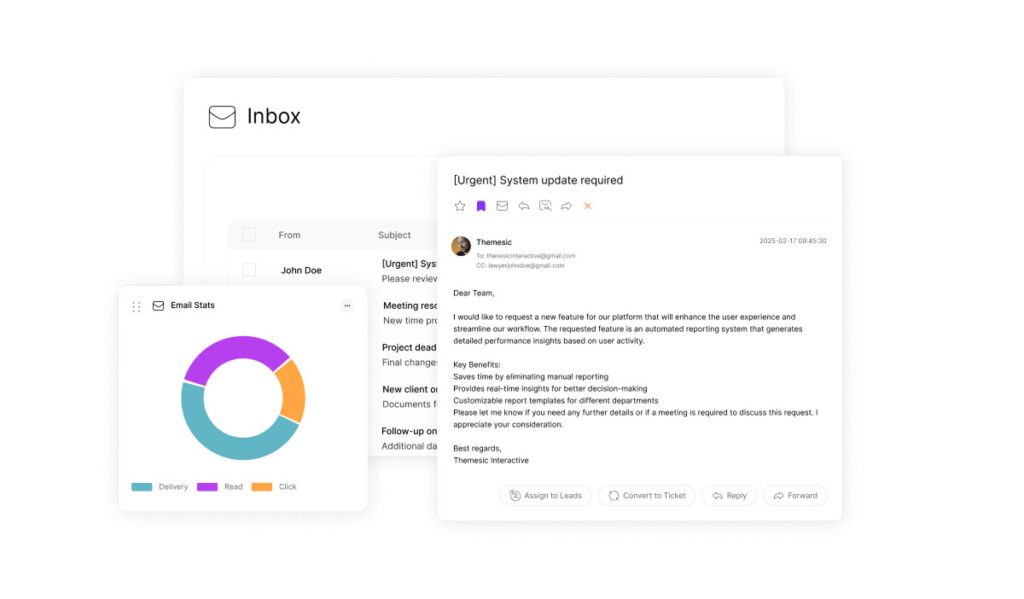
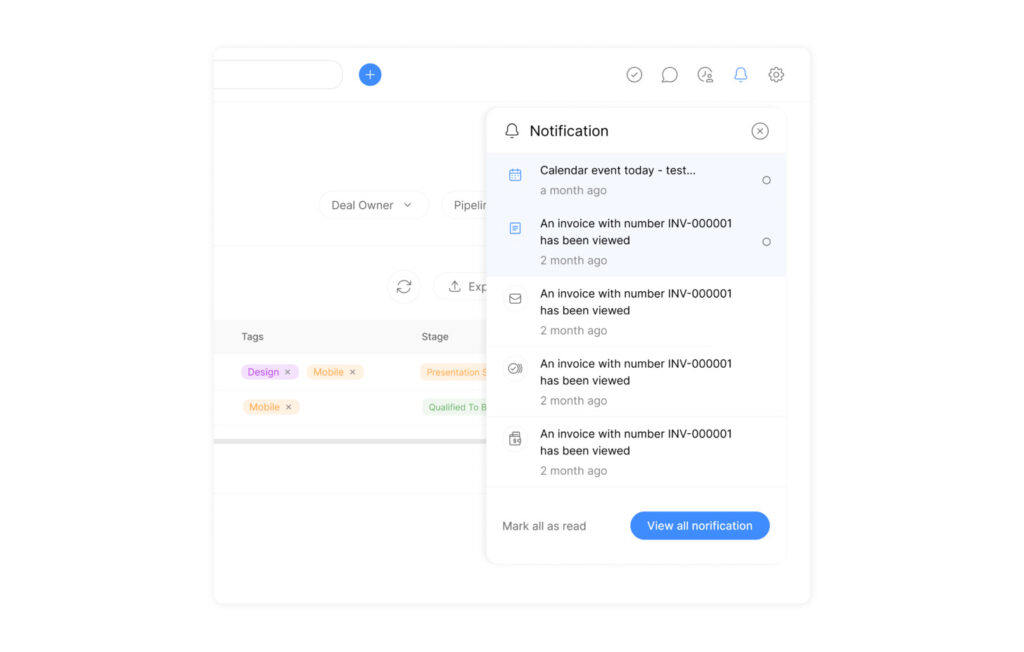
Intelligent Follow-Up Automation
Integrated platforms transform meeting outcomes into action without manual intervention. Schedule follow-up tasks, generate proposals, or trigger personalized email sequences based on meeting content—all from within the video conferencing interface. This automation ensures consistent follow-through and eliminates the post-meeting administrative burden.
Unified Team Collaboration
Whether your team works in the same office or remotely across multiple time zones, integrated video conferencing software keeps everyone aligned. Share meeting recordings with team members who couldn’t attend, collaborate on client documents in real-time during calls, and maintain contextual chat threads that preserve the complete history of client interactions.

Enterprise-Grade Video Quality
Host professional video meetings with HD video quality, support for up to 100 participants, advanced screen sharing options, virtual backgrounds, and comprehensive recording capabilities—all while maintaining seamless integration with your client relationship data. These platforms deliver video conferencing software features that rival dedicated solutions like Zoom and Microsoft Teams.
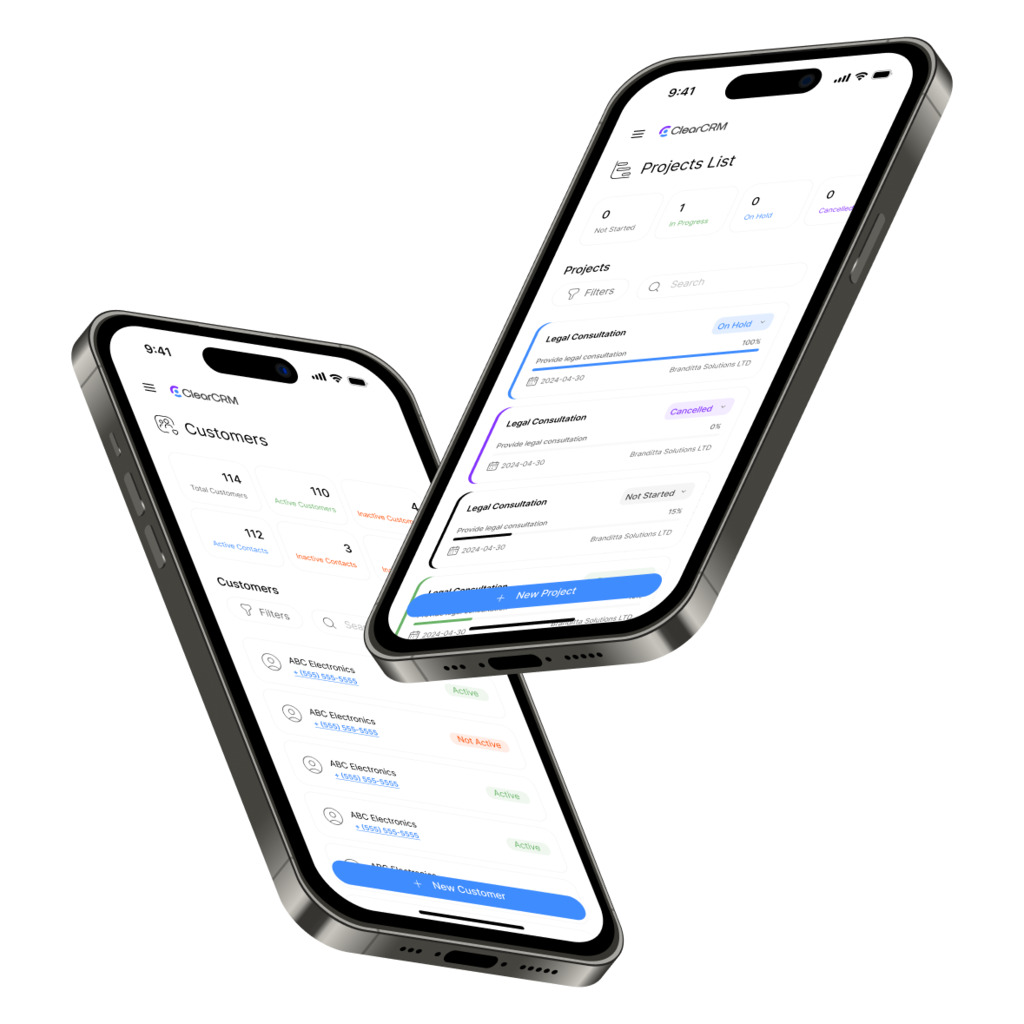
Cross-Device Accessibility
Access the full power of integrated video conferencing software from any device. Join meetings, review client information, and manage follow-ups whether you’re at your desk, working from home, or on the road. The mobile experience maintains the same contextual awareness and productivity features as the desktop version.

Comprehensive Meeting Analytics
Gain deeper insights into your client engagement patterns with integrated analytics. Track meeting frequency, participation rates, speaking time distribution, and engagement levels—then correlate these metrics with client satisfaction scores and revenue outcomes to optimize your approach to virtual meetings.
Experience seamless meeting-to-CRM workflow
Join thousands of businesses that have eliminated the gap between video conferencing software and client management.
Real-World Application: Integrated Video Conferencing Software in Action
Let’s explore how Brightway Consulting, a 15-person financial advisory firm, transformed their client communication process by implementing integrated video conferencing software with CRM capabilities.

Before Integration: The Disjointed Approach
- Client meetings scheduled through Calendly
- Video conferences conducted via Zoom
- Meeting notes captured in Evernote
- Client data stored in Salesforce
- Task management handled in Asana
- Team communication scattered across Slack and email

The Integrated Transformation
- Streamlined Meeting Scheduling
James, the senior advisor, schedules a quarterly review meeting directly through the integrated platform. The system automatically checks team availability, sends branded invitations with secure one-click join links, and adds the appointment to everyone’s calendars while linking it to the client’s CRM profile. - Information-Rich Video Conferences
When the meeting begins, James and his team have immediate access to the client’s complete financial history, previous meeting summaries, investment performance, and outstanding questions—all visible alongside the video conferencing interface, eliminating the need to switch between applications. - Dynamic Document Collaboration
During the call, the investment specialist shares portfolio performance reports through the platform’s screen sharing feature. As the client asks questions, the team annotates the documents in real-time, with all changes automatically saved to the client’s secure portal for future reference. - AI-Assisted Meeting Documentation
The platform’s AI assistant automatically captures key discussion points, decisions, and action items throughout the meeting. As the call concludes, it generates a structured summary with assigned responsibilities and deadlines—no manual note-taking required. - Seamless Follow-Through
Between meetings, the team uses the platform’s unified workspace to discuss implementation details, track progress on action items, and share updates with the client—with all communications automatically documented in the client’s history for complete continuity.
“Before implementing integrated video conferencing software, we spent approximately 12 hours per week just coordinating information between our meeting platform and CRM. Now, everything happens automatically in one system, and we’ve redirected that time toward providing more personalized client service, which has directly improved our retention rate by 22%.”
Ready to achieve similar results for your business?
See how integrated video conferencing software can transform your client relationships.
Measurable Benefits of Integrated Video Conferencing Software
When you bring together video conferencing software and CRM capabilities in a single platform, you don’t just gain convenience—you transform fundamental business operations. Here’s what businesses consistently report after implementing integrated solutions:

Productivity Acceleration
Businesses report saving an average of 9.5 hours per employee per week by eliminating the need to switch between video conferencing software and CRM systems or manually transfer information between platforms. This productivity boost allows teams to serve more clients without increasing headcount.
32% Productivity Increase

Enhanced Client Relationships
With comprehensive client context available during every video meeting and consistent follow-through on commitments, businesses using integrated platforms report significant improvements in client satisfaction scores and relationship longevity. The personalized experience creates stronger client bonds.
24% Higher Retention

Accelerated Revenue Cycles
The seamless flow from video meeting to proposal generation to automated follow-up significantly reduces sales cycle duration. Businesses report closing deals faster when using integrated platforms compared to managing these processes across separate systems.
35% Faster Deal Closure

Improved Team Alignment
When everyone accesses the same client information and communication history through integrated video conferencing software, team coordination improves dramatically. Organizations report fewer internal miscommunications, reduced duplicate efforts, and better cross-functional collaboration on client projects.
47% Better Coordination

Minimized Administrative Burden
Automated meeting summaries, AI-assisted note-taking, and intelligent task assignment mean your team spends significantly less time on low-value administrative tasks. This automation allows professionals to focus their expertise on client-facing activities that drive business growth.
58% Less Admin Work

Effortless Business Scaling
As your client base grows, integrated platforms scale with you without proportional increases in administrative overhead. Businesses report being able to manage significantly more client relationships with the same team size after implementing integrated video conferencing software with CRM capabilities.
2.7x Client Capacity
“The integration of our video conferencing software with our client management system delivered immediate ROI. Within just 60 days, we measured a 28% reduction in our sales cycle and a 34% increase in proposal acceptance rates. The ability to maintain perfect continuity between client conversations and follow-up actions has transformed our business development process.”
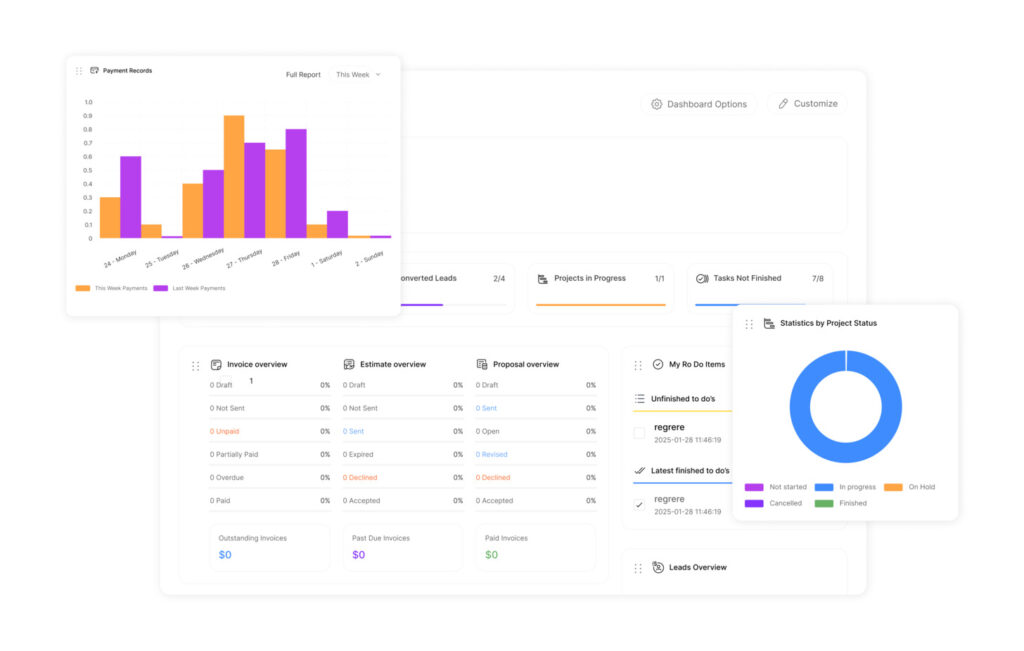
Ready to see these benefits in your business?
Join thousands of organizations that have transformed their operations with integrated video conferencing.
How Integrated Solutions Compare to Traditional Video Conferencing Software
Many businesses attempt to create makeshift solutions by connecting standalone video conferencing software with separate CRM systems. Let’s examine how purpose-built integrated platforms compare to these cobbled-together approaches:
Integrated Platform
- Native integration between video conferencing and CRM—designed as a unified system from the ground up
- Client information automatically displayed during video meetings without manual lookup
- Meeting recordings, transcripts, and notes automatically linked to client profiles without extra steps
- Built-in workflow automation for follow-ups based on meeting content
- Single interface for all client communications and relationship management
- Unified analytics connecting meeting engagement with business outcomes
- One subscription, one vendor, one support team to contact
- Purpose-built for the specific needs of client-focused businesses
Zoom + Separate CRM
- Third-party integration requiring API configuration and maintenance
- Manual effort needed to reference client information during calls
- Meeting artifacts must be manually uploaded and linked to client records
- Workflow automation requires additional third-party tools and custom setup
- Constant switching between interfaces during client interactions
- Disconnected analytics requiring manual correlation between systems
- Multiple subscriptions, vendors, and support teams to manage
- Generic solutions adapted for business use rather than purpose-built
Microsoft Teams + Enterprise CRM
- Complex enterprise platforms with steep learning curves for small teams
- Expensive licensing models with features small businesses rarely use
- Requires IT expertise or consultants to configure and maintain
- Integration capabilities exist but demand custom development work
- Designed primarily for internal collaboration rather than client management
- Overwhelming feature complexity that creates adoption barriers
- High total cost of ownership including implementation and training
- Significant ongoing administration and governance requirements
The Fundamental Difference: Built for Client-Centric Workflows
While enterprise video conferencing software like Microsoft Teams focuses on internal collaboration and generic CRM systems prioritize data collection, integrated platforms are specifically designed for the unique workflow of client-facing businesses. These solutions recognize that in client-focused organizations:
- Client meetings are the primary value-creation activity
- Context from previous interactions dramatically improves meeting quality
- The gap between conversation and follow-through is where opportunities are lost
- Different team members need access to complete client history
- Meeting documentation should happen automatically, not as an additional task

“We initially tried connecting Zoom with our CRM through Zapier, but it was like trying to build a car by bolting together parts from different vehicles—technically possible but never smooth. Moving to an integrated platform designed specifically for client meetings eliminated the friction points and gave us a solution that actually works the way our business does.”
Experience the difference of purpose-built integration
See why businesses are switching from cobbled-together solutions to truly integrated platforms.
Essential Features of Modern Video Conferencing Software with CRM Integration
When evaluating integrated solutions for your business, certain capabilities are non-negotiable for achieving meaningful workflow improvements. Here are the key features that deliver the most significant operational benefits:

Professional Video Conferencing
Look for platforms that deliver HD video quality, support for 50+ participants, advanced screen sharing options, virtual backgrounds, and breakout room capabilities. The video conferencing experience should match or exceed standalone solutions like Zoom or Google Meet while maintaining seamless CRM integration.
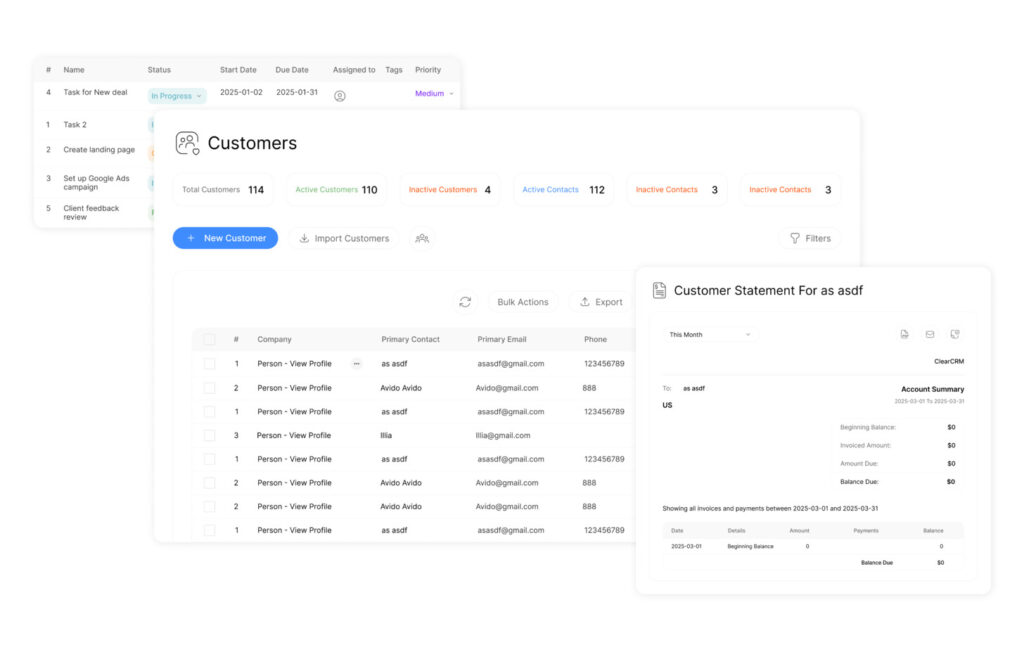
Contextual Client Information
The platform should automatically display relevant client information during video calls, including relationship history, previous meeting notes, outstanding proposals, support tickets, and upcoming milestones. This contextual awareness eliminates the need to search for information during critical client conversations.

AI Meeting Assistant
Advanced platforms now include AI capabilities that automatically transcribe meetings, identify action items, extract key discussion points, and even generate meeting summaries. This automation dramatically reduces the administrative burden of meeting documentation while improving information capture accuracy.

Intelligent Workflow Automation
The system should automatically generate follow-up tasks, schedule reminders, create documents, and trigger communication sequences based on meeting content. This automation ensures consistent follow-through without requiring manual intervention after each client interaction.
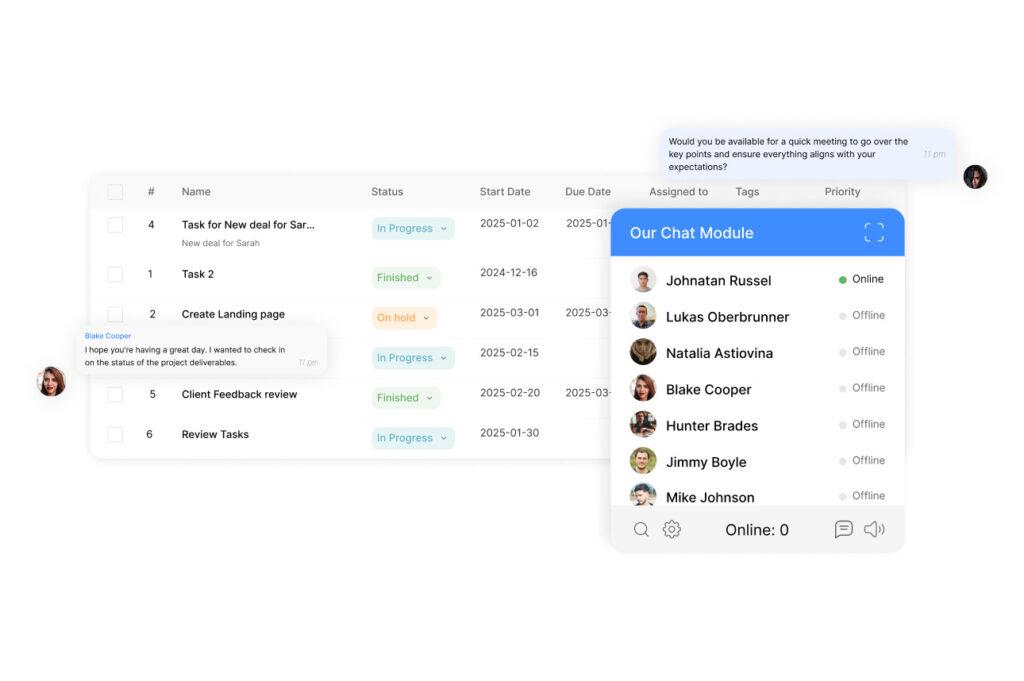
Collaborative Workspaces
Look for platforms that enable real-time document collaboration, digital whiteboards, and shared notes during video meetings. These collaborative tools transform passive video calls into interactive working sessions where decisions are documented and implemented in real-time.
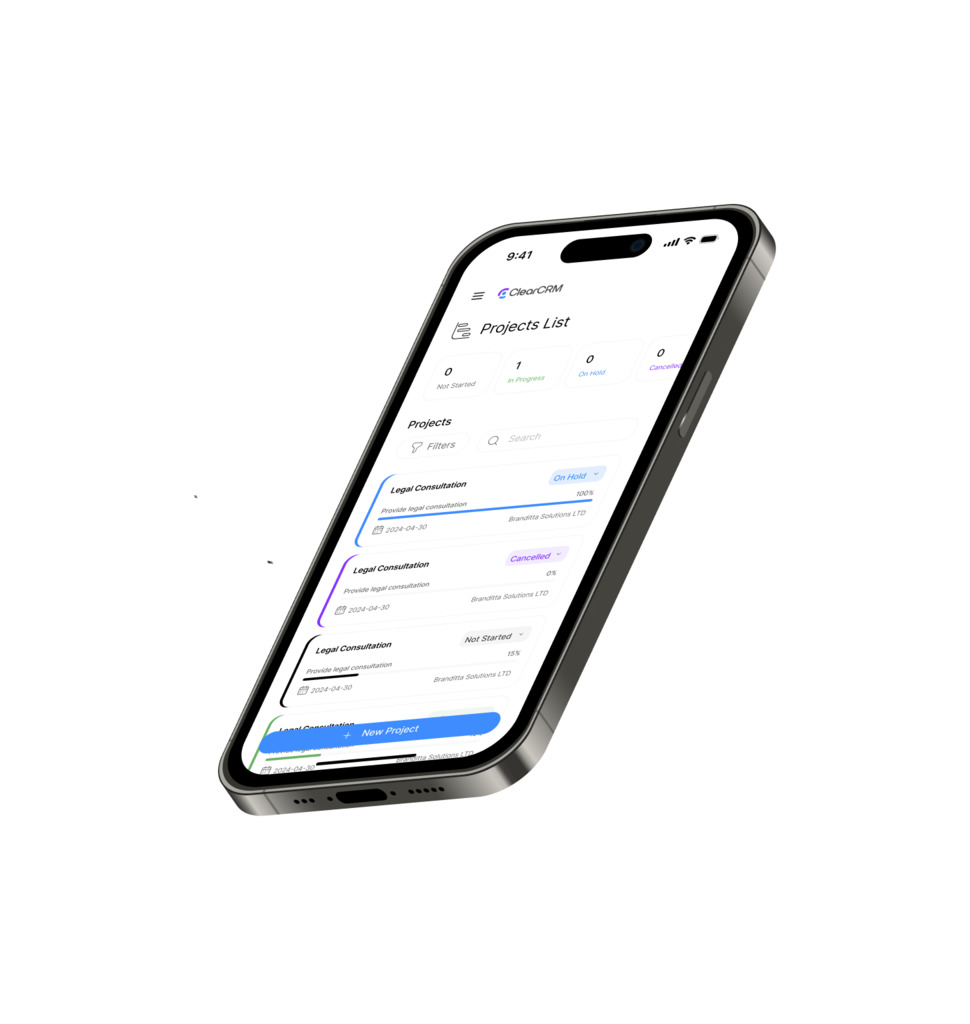
Cross-Device Accessibility
The platform should provide a consistent experience across desktop, web, mobile, and tablet interfaces. Team members need to access the full power of integrated video conferencing software regardless of where they’re working or which device they’re using.

Enterprise-Grade Security
Given the sensitive nature of client communications, robust security features are essential. Look for end-to-end encryption, role-based access controls, compliance certifications (GDPR, HIPAA, etc.), and comprehensive audit logs to ensure your client interactions remain protected.

Customization Options
The ability to brand the video conferencing experience with your company logo, colors, and custom meeting URLs creates a more professional impression. Advanced platforms allow you to tailor the interface to match your brand identity across all client touchpoints.
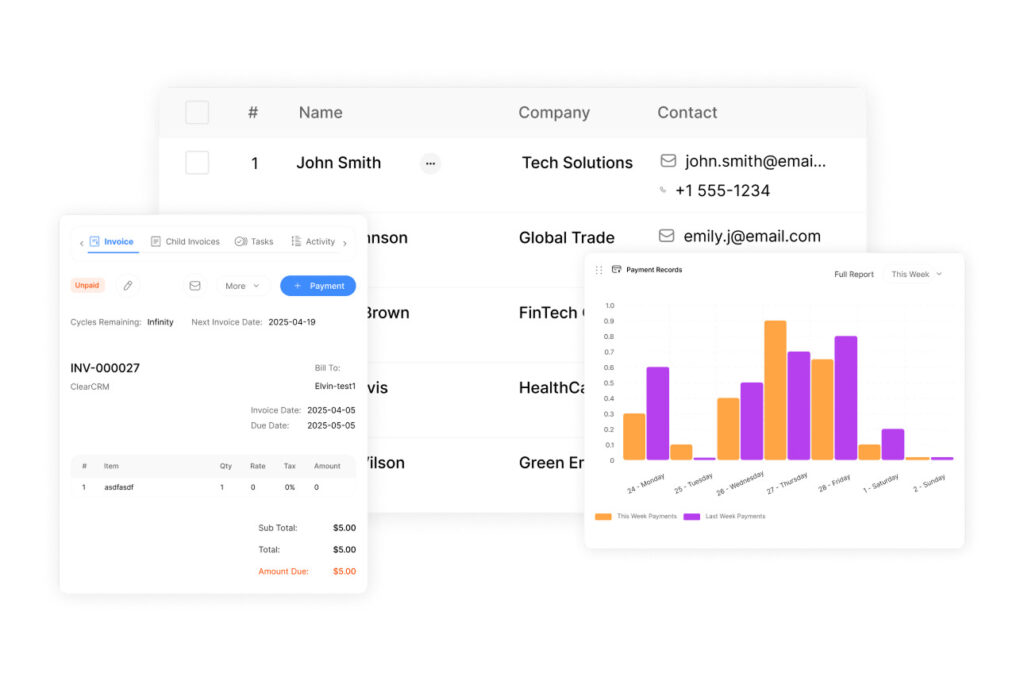
Integrated Analytics
Comprehensive reporting should connect video conferencing metrics (meeting frequency, duration, participation) with business outcomes (deal progression, client satisfaction, revenue). These insights help optimize your client communication strategy based on data rather than intuition.
Ready to explore these features in action?
See how integrated video conferencing software can transform your client interactions.
Implementing Integrated Video Conferencing Software: A Practical Guide
Transitioning from disconnected tools to an integrated video conferencing and CRM platform requires thoughtful planning. Here’s a practical roadmap to ensure a smooth implementation that delivers immediate value while minimizing disruption to your ongoing operations.

Before Implementation: Strategic Preparation
Audit Your Current Workflow
Before selecting a platform, document your existing meeting and client management processes. Identify specific pain points, inefficiencies, and manual steps that could be eliminated through integration. This audit creates a clear picture of what success looks like for your implementation.
Define Success Metrics
Establish concrete, measurable objectives for your implementation. Common metrics include time saved per meeting, reduction in follow-up tasks, improvement in meeting documentation quality, and increase in client satisfaction scores. These benchmarks will help you evaluate ROI.

Implementation Phase: A Phased Approach
- Start with a Pilot Team
Begin with a small, cross-functional team that handles significant client communication. This group will validate the platform’s benefits in your specific context and help refine implementation strategies before company-wide rollout. - Migrate Historical Data
Import relevant client history, meeting notes, and relationship data from your existing systems. Most integrated platforms offer migration tools or services to ensure you maintain continuity of client information. - Configure Custom Workflows
Set up automated workflows that match your business processes. This includes meeting templates, follow-up sequences, document generation rules, and integration with other essential business systems. - Conduct Thorough Training
Provide comprehensive training that focuses not just on technical features but on the new workflow paradigm. The most successful implementations emphasize how the platform transforms processes rather than simply replacing tools. - Gradual Client Transition
Move client meetings to the new platform in phases, starting with internal meetings, then friendly clients, and finally your full client roster. This approach minimizes risk and allows for process refinement.

Post-Implementation: Optimization and Expansion

Measure and Refine
After 30-60 days, assess performance against your defined success metrics. Identify any gaps or opportunities for optimization, and refine your configuration and workflows accordingly. Most businesses discover additional automation opportunities during this phase.

Advanced Feature Adoption
Once your team masters the core functionality, introduce more advanced features like AI meeting assistants, advanced analytics, or custom integrations. This phased feature adoption prevents overwhelming users while continuously improving your return on investment.

Gather Client Feedback
Actively solicit feedback from clients about their experience with your new meeting process. Most businesses find that clients appreciate the more organized, responsive approach that integrated platforms enable, and their input can guide further refinements.
“The key to our successful implementation was taking a phased approach rather than attempting a ‘big bang’ transition. We started with our business development team, refined our processes based on their experience, then gradually expanded to account management and client service. This approach allowed us to demonstrate clear ROI at each stage, which built organizational momentum for the change.”
Ready for a smooth transition to integrated meetings?
Our implementation specialists can guide you through each step of the process.
Success Stories: Transformations Through Integrated Video Conferencing Software
Organizations across various industries have achieved remarkable results by implementing integrated video conferencing software with CRM capabilities. These case studies illustrate the tangible business impact of bringing these critical functions together.


Meridian Financial Advisors
This 12-person wealth management firm struggled with maintaining comprehensive client records across their video meetings and financial planning processes. After implementing an integrated platform, they achieved:
- 42% reduction in post-meeting administrative time
- 28% increase in client satisfaction scores
- 18% growth in assets under management within 6 months
- Ability to serve 35% more clients without adding staff
The automated meeting documentation and seamless follow-up workflows allowed advisors to focus on relationship building rather than paperwork.

Catalyst Creative Agency
This digital marketing agency with 25 employees across three locations struggled with coordination between account managers, creative teams, and clients. Their integrated platform implementation delivered:
- 65% improvement in project handoff accuracy
- 52% reduction in revision requests due to better initial requirements capture
- 31% faster project completion times
- 27% increase in client retention rate
The ability to conduct video meetings with complete project context and automatically assign creative briefs based on client feedback transformed their delivery process.

Horizon Software Solutions
This B2B software provider struggled with a disconnected sales process where details from discovery calls often failed to transfer to implementation teams. After adopting an integrated platform, they achieved:
- 39% shorter sales cycles
- 47% improvement in implementation satisfaction scores
- 23% higher average contract value
- 58% reduction in onboarding-related support tickets
The continuous information flow from sales conversations through implementation planning eliminated the knowledge gaps that previously caused client frustration.
“The most surprising outcome wasn’t just the efficiency gains—though saving 15+ hours per week across our team was significant. The real transformation came from how much more strategic our client conversations became. When you’re not worried about capturing and transferring information, you can focus completely on understanding client needs and delivering value in the moment.”
Ready to write your own success story?
Join these organizations in transforming your client communications with integrated video conferencing software.
Transform Your Client Communications with Integrated Video Conferencing Software
In today’s competitive business environment, the quality of your client interactions directly impacts your bottom line. By bringing together professional video conferencing software with comprehensive CRM capabilities, integrated platforms eliminate the friction points that slow down your team and create a seamless experience that helps you win and retain more clients.

Imagine starting each client meeting fully prepared with complete relationship history at your fingertips, conducting professional video conferences where nothing gets lost in translation, and ending each interaction with confidence that follow-through will happen automatically. That’s the reality for thousands of businesses using integrated video conferencing software with CRM capabilities.
Whether you’re a financial advisory firm building trust through regular client reviews, a marketing agency coordinating complex projects across multiple stakeholders, or a professional services company looking to scale without proportional increases in administrative overhead, integrated platforms provide the unified workspace you need to deliver exceptional client experiences efficiently.
Ready to transform your client communications?
Join the thousands of businesses that have eliminated the gap between video conferencing and client management.

